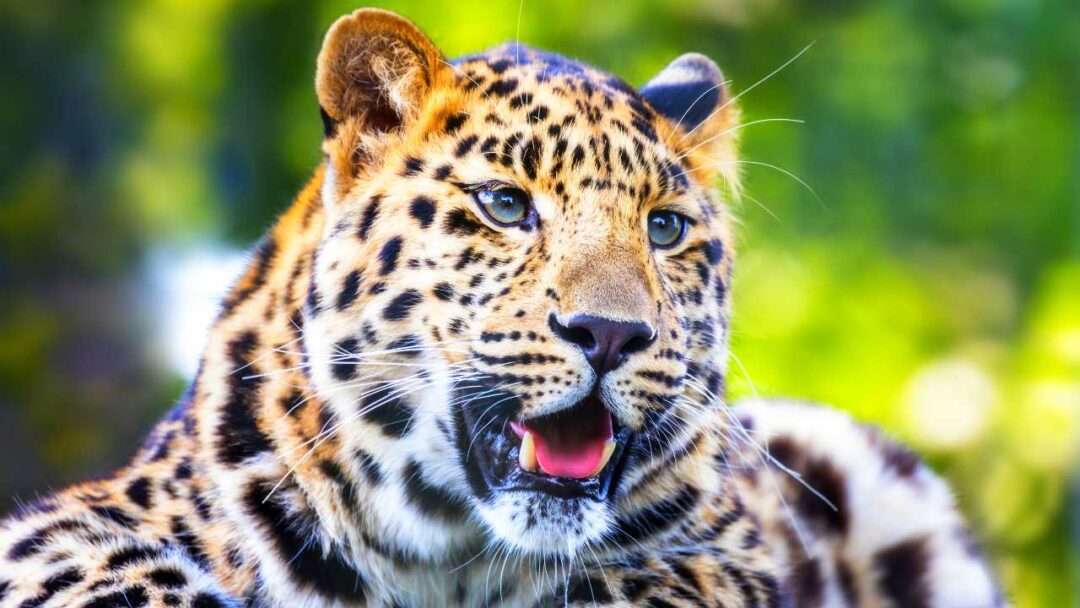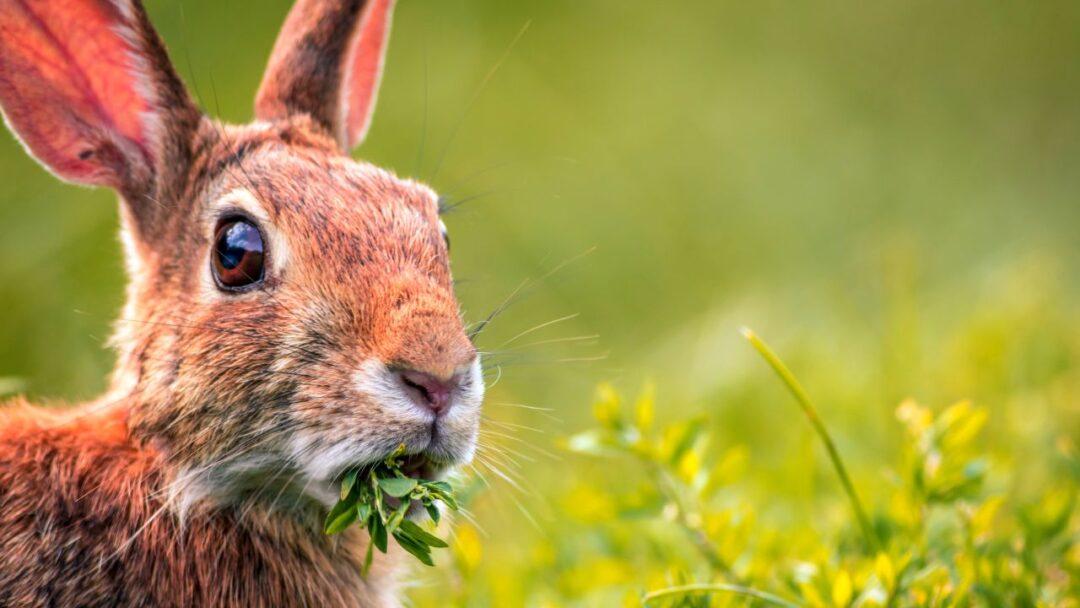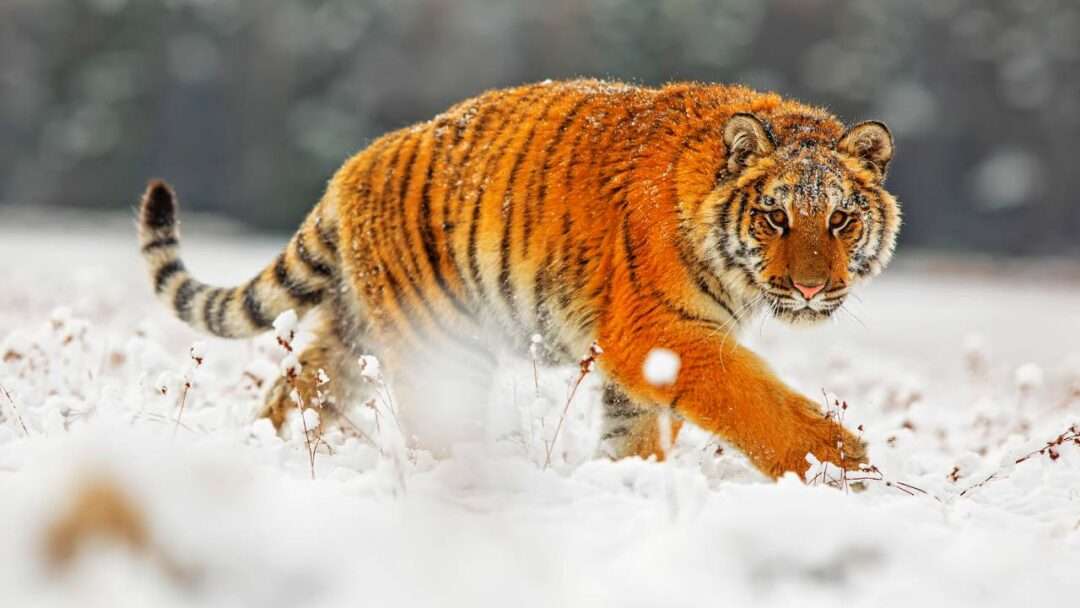Table of Contents

Introduction
Every species on Earth contributes in a special and essential way to the rich tapestry of life. However, the relentless march of extinction is putting some of our planet’s most remarkable inhabitants in danger today, as we watch in horror. The burden of protecting these creatures rests squarely on our shoulders as the fragile balance of nature is under attack.
We set out on a journey to learn more about the “20 Most Endangered Animals” on our planet in this article. We’ll delve deeply into their environments, behaviors, and the serious threats they encounter. Each of these extraordinary creatures is proof of the wonders of evolution and the priceless importance of biodiversity. It is our hope that by shedding light on their plight, we can inspire action and ignite a passion for conservation.
- Amur Leopard (Panthera pardus orientalis)
Estimated Population: Less than 100
An epitome of grace and elegance is the Amur leopard, a subspecies of the common leopard. This remarkable feline, which is native to parts of China and the Russian Far East, is in danger of going extinct. Less than 100 individuals still struggle to survive in the wild as a result of habitat loss, poaching, and climate change.
- Javan Rhino (Rhinoceros sondaicus)
Estimated Population: Less than 70
One of the rarest mammals in the world still lives in the dense jungles of Java, Indonesia: the Javan rhinoceros. This lone creature has survived for centuries, but unrelenting habitat destruction and poaching for its horn have pushed it to the brink. There are less than 70 individuals left, so conservation efforts must begin immediately.
- Vaquita (Phocoena sinus)
Estimated Population: Less than 10
The most endangered marine mammal in the world is the vaquita, a small porpoise that lives in the Gulf of California. These elusive creatures are on the verge of extinction because they are caught in illegal gillnets designed for the totoaba fish, an additional endangered species. It’s a race against time to prevent them from going extinct because there are currently fewer than ten of them.
- Northern White Rhino (Ceratotherium simum cottoni)
Estimated Population: 2 (as of last knowledge cutoff)
The northern white rhinoceros serves as a sobering reminder of the effects of human activity on the environment. This majestic species is on the verge of going extinct due to poaching for its horns. The fate of the northern white rhino is in jeopardy because there are now only two individuals, Najin and Fatu, that are being cared for by humans.
- Sumatran Orangutan (Pongo abelii)
Estimated Population: Less than 14,000
The Sumatran orangutan is a critically endangered species that lives in Sumatra’s lush rainforests. These gentle and intelligent great apes have suffered greatly due to rapid deforestation and the illegal pet trade. There are currently less than 14,000 people left, so immediate action is necessary to ensure their survival.
- Cross River Gorilla (Gorilla gorilla diehli)
Estimated Population: Less than 300
The Cross River gorilla lurks in the shadows in the rainforests of Nigeria and Cameroon. Despite being elusive, they are still at risk from habitat loss and poaching. They are one of the most endangered primates in the world with less than 300 individuals.
- Hawksbill Sea Turtle (Eretmochelys imbricata)
Estimated Population: Unknown
Threats to the hawksbill sea turtle, a symbol of our oceans, include habitat loss, pollution, and poaching for their priceless shells. Although there is no exact estimate of their population, their numbers have drastically decreased recently, necessitating urgent conservation efforts.
- Saola (Pseudoryx nghetinhensis)
Estimated Population: Less than 100
The saola, an impressive antelope-like animal found in the Annamite Mountains of Laos and Vietnam, is known as the “Asian unicorn” due to its elusiveness. Due to habitat destruction and hunting, this species, which was only discovered in 1992, is now in grave danger of extinction. The saola is still one of the greatest mysteries in the world, with less than 100 individuals left.
- Philippine Eagle (Pithecophaga jefferyi)
Estimated Population: Less than 400
With its enormous wingspan and distinctive plumage, the majestic Philippine eagle is a national symbol of conservation in the Philippines. This bird is in grave danger from habitat loss and deforestation. With fewer than 400 people left, it is imperative to make every effort to ensure its future.
- Kakapo (Strigops habroptilus)
Estimated Population: Approximately 200
A future conservation success story is the flightless New Zealand native parrot known as the kakapo. As a result of intensive management and predator control, their population has risen from 50 in the 1990s to about 200 in the present. They are still gravely endangered, though, and sustained recovery efforts are crucial.
- Yangtze Finless Porpoise (Neophocaena asiaeorientalis ssp. asiaeorientalis)
Estimated Population: Less than 1,000
The Yangtze finless porpoise fights against habitat loss, pollution, and boat traffic in the murky Yangtze River. With fewer than 1,000 individuals remaining, saving this rare and endangered cetacean is a race against time.
- Greater Bamboo Lemur (Prolemur simus)
Estimated Population: Less than 250
Because the greater bamboo lemur of Madagascar depends on bamboo for food, it is susceptible to habitat loss and fragmentation. This adorable primate is critically endangered and has a bleak future with fewer than 250 individuals left.
- Red Wolf (Canis rufus)
Estimated Population: Fewer than 20 in the wild
One of the most threatened canids in the world is the red wolf, a native of the southeastern United States. Their population has been greatly reduced by hybridization with coyotes and habitat loss. Less than 20 red wolves were still roaming the wild as of the most recent information.
- Hainan Gibbon (Nomascus hainanus)
Estimated Population: Less than 30
One of the rarest primates on Earth is the Hainan gibbon, which is only found on the Chinese island of Hainan. With fewer than 30 individuals left, habitat loss and poaching have driven this species to the verge of extinction.
- Northern Bald Ibis (Geronticus eremita)
Estimated Population: Less than 500
The northern bald ibis, which is significant both historically and culturally, is now in grave danger. This unusual species has been impacted by hunting, disturbance, and habitat loss. With fewer than 500 individuals left, this living relic requires immediate conservation action.
- Bornean Orangutan (Pongo pygmaeus)
Estimated Population: Less than 55,000
Another of the great apes of the world, the Bornean orangutan, is threatened by deforestation, habitat fragmentation, and the illicit pet trade. With less than 55,000 left, they have a higher population than the Sumatran orangutan, but they are still in grave danger and need to be protected.
- Blue Whale (Balaenoptera musculus)
Estimated Population: Unknown, but recovering
Due to commercial whaling, the blue whale, the biggest animal to have ever lived on Earth, was in danger of going extinct. Thankfully, conservation initiatives and restrictions on whaling have allowed for a slow recovery in their populations, but they are still in danger.
- Mountain Gorilla (Gorilla beringei beringei)
Estimated Population: Approximately 1,000
Thanks to conservation efforts, the mountain gorilla, which lives on the crater peaks of Rwanda, Uganda, and the Democratic Republic of the Congo, has made a remarkable comeback. In spite of this, they still need vigilant protection because there are only about 1,000 of them.
- Western Lowland Gorilla (Gorilla gorilla gorilla)
Estimated Population: Unknown, but declining
Threats from habitat loss and hunting exist for the western lowland gorilla, which is found in the dense forests of Central Africa. They are unquestionably endangered, and the decline of their population is worrying, even though precise population numbers are difficult to estimate.
- Sumatran Tiger (Panthera tigris sumatrae)
Estimated Population: Less than 400
Only the island of Sumatra in Indonesia is home to the critically endangered Sumatran tiger subspecies. They are threatened by deforestation, poaching, and conflicts between people and wildlife. There are currently less than 400 people left, so immediate action is needed to protect their future.
Frequently Asked Questions
What are the most endangered animals in 2023?
The most endangered animals included the Javan Rhino, Vaquita Porpoise, Amur Leopard, Sumatran Elephant and many others. However, the list of endangered animals can change over time due to conservation efforts and changes in their populations.
How is an animal classified as endangered?
When an animal faces a serious extinction risk, it is deemed to be endangered. Typically, this classification is based on elements like dwindling populations, habitat loss, and threats from human activity. The International Union for Conservation of Nature (IUCN) criteria are used by conservation organizations and governments to assess an animal’s status.
What are the main reasons for the decline of endangered animals?
The destruction of habitat, poaching, climate change, and pollution are the main factors contributing to the decline of endangered species. These elements harm the animals directly by upsetting their ecosystems and reducing food sources.
Are there any success stories in saving endangered animals?
Yes, some endangered species have recovered as a result of successful conservation efforts. Two examples of species that have significantly recovered as a result of conservation efforts are the giant panda and the California condor.
How can I contribute to the conservation of endangered animals?
Supporting reputable conservation groups, taking part in regional conservation initiatives, raising awareness about endangered species, and making eco-friendly decisions in your daily life can all help save endangered animal species.
Is it legal to own an endangered animal as a pet?
Owning endangered animals as pets without the necessary permits and licenses is prohibited in the majority of nations. Additionally, keeping endangered animals as pets can harm their populations by promoting the illegal wildlife trade.
What is the role of zoos in conserving endangered animals?
By breeding and maintaining genetically diverse populations of threatened and endangered species, zoos play a significant role in conservation. In order to aid in the conservation of endangered species, many zoos also take part in research, teaching, and public awareness campaigns.
Are there any new technologies being used to protect endangered animals?
Indeed, the use of technology in conservation efforts is growing. This includes the use of DNA analysis to stop wildlife trafficking, satellite tracking to track animal movements, and artificial intelligence to study and safeguard habitats.
Can climate change impact the status of endangered animals?
Yes, due to changes in their habitats, changes in their food sources, and an increase in the frequency of extreme weather events, climate change can have a significant impact on endangered species of animals. These modifications may endanger their existence even more.
How can I stay updated on the latest news and developments related to endangered animals in 2023?
Following reputable conservation groups, wildlife protection organizations, and news sources that cover environmental and wildlife conservation issues will keep you up to date. In addition, a lot of official websites offer details on the plight of endangered species.
Conclusion
The journey through the lives and hardships of the 20 most endangered animals on Earth serves as a reminder of how fleeting life is and how crucial conservation efforts are. These amazing creatures, each one distinctive in their own right, are more than just representations of biodiversity; they also represent the living history of our planet.
It is morally required of us as stewards of this planet to take action. We are responsible for these animals’ future. We have the ability to reverse the trend and guarantee that these species will no longer just survive, but also thrive, through habitat preservation, anti-poaching initiatives, and increased public awareness.
Monkeys’ Deadly Foes: The Ultimate Wildlife Showdown : Must Visit
Let us be amazed by their beauty and inspired by their tenacity. Let’s put forth unwavering effort to safeguard these magnificent creatures and the ecosystems they call home. These 20 endangered species will either continue to grace our planet with their presence or vanish into the annals of history based on the actions we take today.
Their survival ultimately depends on our own because we are all entangled in the complex web of life on Earth.
The most endangered animals in the world, their estimated populations, and the critical need for conservation efforts are all covered in detail in this article. It offers a thorough perspective on the crucial problem of biodiversity loss by covering a wide range of species, from charismatic megafauna to lesser-known creatures.





Pingback: 10 Mysterious Mythical Creatures: Who Once Ruled The Earth